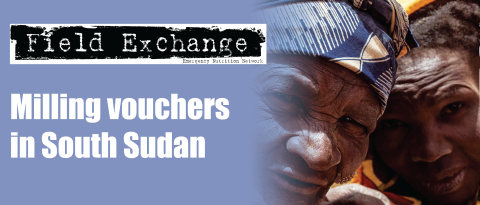Report on accessing SAM treatment globally
 In little over four decades, SAM treatment has gone from a small-scale clinical endeavour to a global public health service reaching over two million cases a year. Much of this scale-up has occurred in the last decade following the introduction of community-based severe acute malnutrition (SAM) treatment approaches. Since the rapid-scale up of such community-based approaches, however, there have been few overarching reviews of their performance over time.
In little over four decades, SAM treatment has gone from a small-scale clinical endeavour to a global public health service reaching over two million cases a year. Much of this scale-up has occurred in the last decade following the introduction of community-based severe acute malnutrition (SAM) treatment approaches. Since the rapid-scale up of such community-based approaches, however, there have been few overarching reviews of their performance over time.
A report by the Coverage Monitoring Network (CMN), the first in a three part series, offers a comparative assessment of the performance and effectiveness of the community-based model during two distinct periods of its development: from 2001-2006 when the majority of community-based treatment projects were implemented by non-governmental organisations (NGOs); and from 2007-2013 when many community-based treatment programmes were integrated by ministries of health (MoH) into regular health services. For each period, three components of the community-based treatment model are assessed: the capacity of treatment services cure SAM cases successfully, their capacity to reach the highest proportion of the affected population (coverage) and their cost-effectiveness.
The report has three main conclusions:
- Community-based treatment models deliver exceptional clinical outcomes. The median cure rates of community based models in the 2001-2006 and 2007- 2013 periods were 80% and 84% respectively. SAM cases admitted into treatment services today are as likely to be successfully cured today as they were a decade ago.
- In areas where SAM services are available, only a third of affected cases actually access treatment. The analysis shows that whilst high coverage can be achieved by community- based SAM treatment, the conditions necessary to do so are seldom met. The capacity of treatment services to meet global SAM needs depends on coverage being significantly and consistently improved.
- Community-based models are more cost-effective than in-patient models. Cost-effectiveness analyses show that some community-based models were two times more cost effective than in-patient models. In spite of their dependency on context-specific operational factors, recent evidence suggests that MoH delivered community-based SAM treatment services continue to be cost-effective interventions.
Volume two of this three-part series will look more closely at the issues affecting the coverage of community-based SAM treatment services and will ask what prevents SAM cases from reaching treatment services. Volume three will explore possible programmatic and policy changes to make SAM treatment more accessible and will ask what we can learn from other public health interventions about overcoming these barriers.
Guerrero & Rogers (2013). Access for All, Volume 1: Is community-based treatment of severe acute malnutrition (SAM) at scale capable of meeting global needs? (Coverage Monitoring Network, London, June 2013). Available at: http://www.coverage-monitoring.org/


